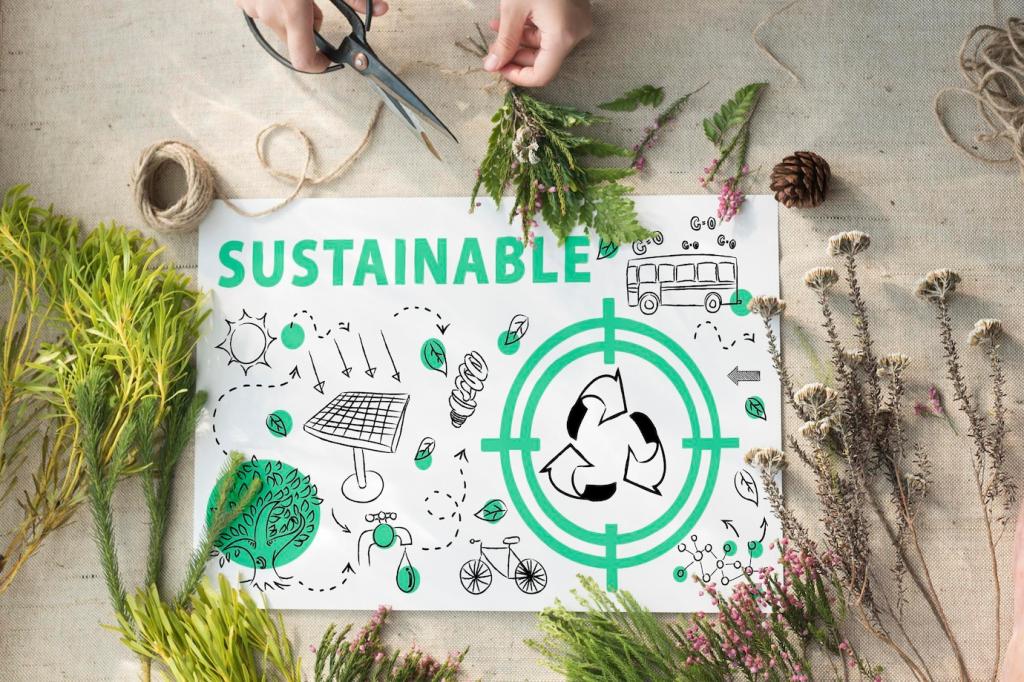Emerging Trends in Sustainable Interior Design
Sustainable interior design is rapidly evolving as environmental consciousness becomes integral to how spaces are created, inhabited, and maintained. Today’s approaches are driven by innovative materials, advanced technology, and a holistic focus on well-being for both people and planet. This page explores eight key trends shaping the present and future of eco-friendly interiors, highlighting how designers, architects, and homeowners are re-envisioning spaces with sustainability at the forefront.

Integration of Biophilic Design
Prioritizing Natural Light
Designers are leveraging architectural features and placement to maximize the inflow of daylight, minimizing the need for artificial lighting. Expansive windows, skylights, and glass partitions are tailored to let sunlight penetrate deep into interior spaces. This reduces energy consumption while contributing to psychological benefits, such as improved mood and productivity, reinforcing the essential relationship between built environments and the natural world.
Incorporating Living Greenery
Living walls, potted plants, and integrated green spaces are being designed as core elements rather than afterthoughts. The inclusion of greenery not only enhances aesthetic value but also actively improves air quality and indoor climate. By intentionally designing interiors with plant life, spaces feel more inviting and are better equipped to promote occupants’ mental and physical wellness.
Using Organic Materials
The preference for organic materials—like natural wood, stone, bamboo, and wool—reflects a deeper commitment to biophilic ideals. These materials carry tactile and visual warmth, fostering comfort and a sense of grounding. Designers are careful to source materials sustainably, balancing durability and renewability with the desire to minimize harmful chemical treatments and synthetic finishes.
Adoption of Circular Design Concepts
Designing for Disassembly
Contemporary furnishings and fixtures are increasingly designed so that components can be easily separated, serviced, or upgraded. This design innovation enables materials to be recycled or repurposed at the end of their useful life, extending product longevity and drastically reducing landfill contributions. Designers are adopting modular assemblies and non-permanent fasteners to facilitate this process.
Encouraging Upcycling and Repurposing
Upcycling is embraced as an art form in sustainable design, taking previously discarded items and giving them new life in creative ways. Interiors might feature repurposed industrial materials or furniture made from reclaimed timber and metal. Designers seek out opportunities to minimize resource extraction by tapping into reclaimed material streams, thus conserving energy and adding unique character to spaces.
Selecting Recyclable Materials
The emphasis on recyclability is influencing material choices more than ever. Interior designers prioritize materials—such as glass, aluminum, and certain plastics—that can be efficiently recycled locally. By weaving recyclability into the design phase, products and finishes are chosen not just for function and style, but also with their end-of-life management fully in view, closing the sustainability circle.
Previous
Next
Previous
Next
Emphasis on Healthy Indoor Environments
Designers are increasingly selecting paints, adhesives, and finishes with low or zero Volatile Organic Compounds (VOCs). These substances help eliminate off-gassing that can pollute indoor air and negatively affect respiratory health. Reducing VOCs supports safer, cleaner interiors that promote overall well-being, making it a non-negotiable standard in responsible design practice.
Digitalization and Virtual Design Tools

Virtual reality (VR) and augmented reality (AR) technologies are now essential for sustainable design visualization. Designers and clients can explore and adjust digital models before any physical resources are committed, identifying the most environmentally friendly options early in the process. This digital prototyping minimizes material waste, accelerates approvals, and ensures informed, conscious decision-making.
Use of Locally-Sourced and Artisanal Products
Utilizing materials native to a project’s location minimizes shipping distances, cutting down on carbon emissions and ensuring compatibility with local climates. Natural stones, timbers, fibers, and clays sourced from nearby regions highlight the beauty of local environments, celebrate traditional techniques, and contribute to resource conservation by encouraging the use of what is readily available.

Revitalizing Existing Structures
Rather than demolishing older buildings, adaptive reuse focuses on transforming them into functional, modern spaces with minimal environmental impact. Preserving architectural features while updating systems to modern sustainability standards conserves resources, honors history, and injects new life into communities. This approach demonstrates that true sustainability often lies in intelligent reinvention.
Modular and Reconfigurable Interiors
Flexibility is being woven into the very DNA of interior spaces. Modular furniture and movable partitions allow rooms to adapt to changing needs over time, reducing the need for new materials and renovations. Through thoughtful design, interiors can shift easily between residential, commercial, or communal functions, extending their viability and sustainability.
Maximizing Versatile Use of Space
Designers are moving away from single-purpose rooms in favor of multifunctional layouts that maximize every square foot. By accommodating multiple activities—such as living, working, or entertaining—within the same footprint, interiors can evolve in tandem with their users, supporting long-term sustainability by avoiding constant overhaul and material consumption.
